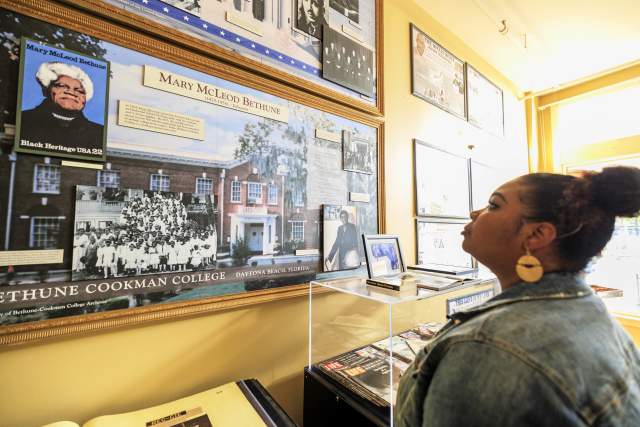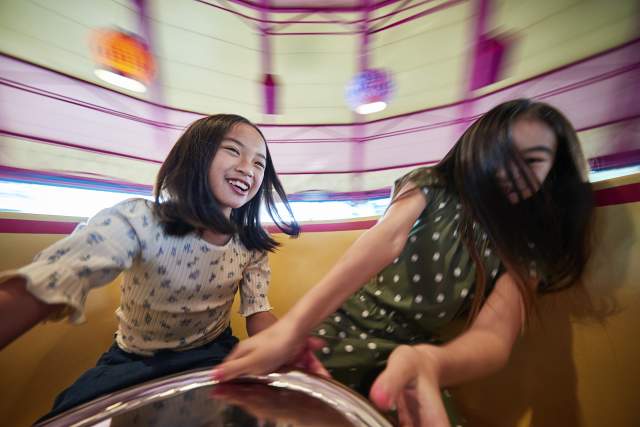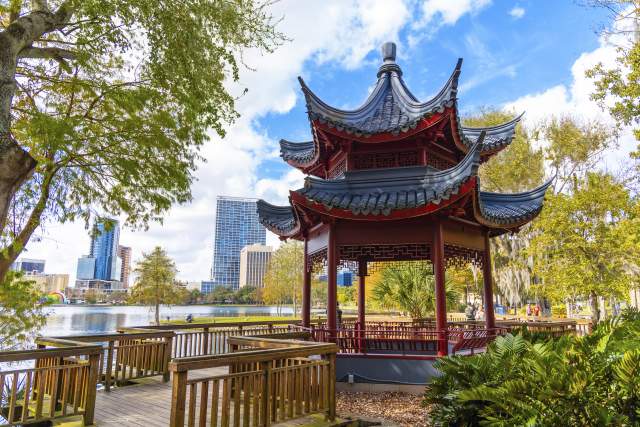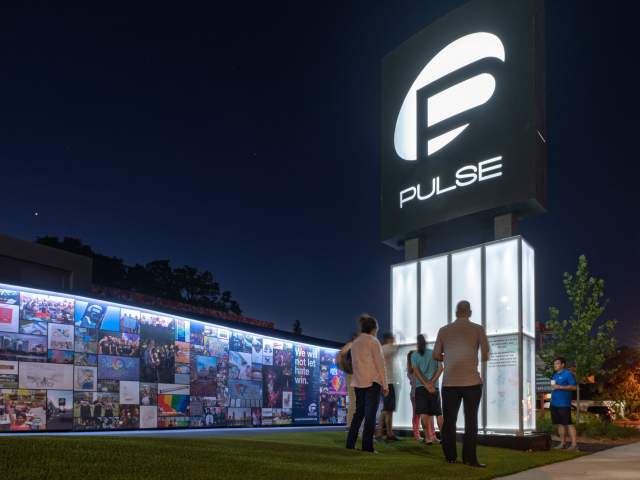See how Orlando’s history informs its phenomenal present and fantastic future.
To hear some people tell it, Orlando’s history didn’t begin until Walt Disney World® Resort opened in 1971 — but the fact is, the region’s rich past can be traced to the prehistoric era, with indigenous Americans, Spanish cattle ranchers, citrus growers, a historic African American community, astronauts, visionaries and other trailblazers making their marks along the way.
Discover: Diversity & Inclusion in Orlando
Even our “modern” era dates to 1838, with the then-town of Orlando officially incorporating in 1875. Want to learn more? Explore our origins and milestones at these unique history centers and historical communities the next time you’re in Orlando.

One of the most fascinating aspects of Orlando’s history is its deep ties to the Civil Rights movement. Historic Eatonville, located 15 minutes west of Winter Park, played a key role and is a must-visit for history buffs. Incorporated in 1887, it’s one of the oldest African American municipalities in the United States. Eatonville was also the childhood home of celebrated author Zora Neale Hurston (Their Eyes Were Watching God).
Discover: Things to Do in Eatonville
Today, Hurston is honored by the Zora Neale Hurston National Museum of Fine Arts, aka The Hurston, which provides gallery space for artists of African descent. There’s no set admission fee, but donations are encouraged. Eatonville also hosts the annual Zora Neale Hurston Festival of the Arts and Humanities, aka ZORA!® Festival, a month-long celebration in January with several events that are free to attend.
Discover: African American History & Culture

Downtown Orlando’s Parramore district is home to the Wells’Built Museum of African American History and Culture. Originally the historic Wells’Built Hotel, the venue is on the U.S. National Register of Historic Places. Today, it houses memorabilia of Orlando’s African American community, exhibits about the Civil Rights movement, and African art and artifacts.
Discover: Things to Do in Parramore
Constructed in 1921 by prominent African American physician Dr. William M. Wells, the hotel offered lodging to African American guests who were barred from Florida’s then-segregated hotels. Numerous famed musicians stayed at the Wells’Built during that era, including Ray Charles, Count Basie, Duke Ellington and others. The hotel was also listed in The Negro Travelers’ Green Book, an annual publication that began in the 1930s and served as the basis for the Oscar-winning 2018 film, Green Book.

Explore even more local African American history at the Hannibal Square Heritage Center in Winter Park. Offering free parking and admission, the 2-story venue features black-and-white photography, artwork, oral histories, and a timeline that stretches all the way back to 1880.
Discover: Things to Do in Winter Park

Encompassing a wide range of cultural backgrounds, Orlando’s Asian American and Pacific Islander (AAPI) population is richly diverse. One of the largest segments is our Vietnamese community, which grew as a result of the Vietnam War. As refugees settled in the area during the 1970s, they built homes, families, churches and businesses — including many stores that still exist in the Mills 50 district, a multicultural dining and nightlife area just north of downtown Orlando.
Discover: Things to Do in Mills 50
Today, the second and third generations of Orlando’s Vietnamese American population carry on their ancestors’ traditions while branching out into all areas of Central Florida’s social, economic and political life. Their history and positive impact are celebrated at the annual Tet (aka Vietnamese Lunar New Year) Festival, held every winter at the Central Florida Fairgrounds.
Discover: AAPI History & Culture
About 15 minutes west of downtown, Orlando’s Chinatown is a collection of authentic Chinese restaurants and retailers. The centerpiece is a traditional Chinese arch known as a paifang or pailou, making it easy for visitors and locals alike to find this historic area.

Another example of authentic Asian architecture can be found in downtown Orlando’s Lake Eola Park, part of the Ivanhoe Village Main Street district. It features a ting, or one-story structure similar to a pagoda, that was built in Shanghai and signifies Orlando’s sister-city relationship with Guilin, China.
Discover: Things to Do in Ivanhoe Village
Orlando is also home to numerous residents of Filipino, Korean, Japanese and Indian descent, among other Asian backgrounds. You’ll find their influences on local culture and history throughout the destination, including celebrations such as winter’s Central Florida Dragon Parade Lunar New Year Festival, October’s Orlando International Dragon Boat Festival and Asian Cultural Expo, and November’s Orlando Korean Festival, among others.

Orlando has robust Hispanic and Latino communities, accounting for more than 25 percent of the population inside our city limits alone. Throughout the year, we honor these groups’ many contributions to local history and culture at vibrant, multifaceted festivals. The Puerto Rican Festival and Parade is one of the most popular of these events — no surprise given that more than half of Orlando’s Hispanic and Latino population originated in Puerto Rico. It’s traditionally held in downtown Orlando every April.
Discover: Hispanic and Latino History & Culture
Other Hispanic and Latino cultural happenings of note include July’s Orlando Salsa Congress and October’s Festival Calle Orange. Furthermore, the City of Orlando and Orange County governments both commemorate Hispanic Heritage Month (Sept. 15 – Oct. 15) with special events such as receptions, art exhibitions, the Orange County Mayor’s Cup Soccer Tournament and more.

Close to downtown Orlando in Ivanhoe Village Main Street, Orlando Museum of Art has one of the region’s most extensive collections of historic Hispanic and Latino artifacts. Displayed as the Art of the Ancient Americas Collection, it consists of more than 900 works of art from more than 35 ancient cultures, including the Aztecs of central Mexico and the Inca of Peru. Of particular to note to anyone with an interest in Hispanic history are 160 Mexican Chupicuaro figurines — the most comprehensive museum collection of its kind in the southeastern U.S.
Spanish architecture is celebrated at Casa Feliz, an Andalusian-style masonry farmhouse that was commissioned in 1932. Located in Winter Park, about 15 minutes north of downtown Orlando, it’s available for private tours for groups of up to six people, but appointments must be made in advance.

There are many other places to explore Orlando’s history, starting with the Orange County Regional History Center and Heritage Square Park in downtown Orlando’s City District. A Smithsonian Institution affiliate housed inside a historic, 5-story county courthouse built in 1927, it traces 12,000 years of Central Florida history.
Discover: Things to Do in City District

In downtown Orlando’s SODO District, the Pulse Interim Memorial doesn’t just honor the 49 lives lost on June 12, 2016: It also serves as a beacon of hope for a future where every human being can live their truth in an understanding world full of unity, acceptance and love.
Discover: LGBTQ+ Travel Guide
In Maitland, about 15 minutes from downtown Orlando, the Holocaust Memorial Resource and Education Center of Florida provides formal and informal opportunities for people of all ages and backgrounds to visit, reflect and grow. Nearby, Art & History Museums — Maitland is listed in the National Register of Historic Places. It offers three different museums featuring unique architecture, beautiful gardens, and quality exhibitions and programs.
Stay Connected to Orlando
You never know what we’ll dream up next. Connect with Visit Orlando’s Vacation Planning Services for free, personalized assistance, and follow us on Facebook, X, Instagram, TikTok, Pinterest, Threads and YouTube for valuable offers, exclusive tips, fresh attractions and the latest events. You can also subscribe to our eNewsletter for more information from Orlando: Theme Park Capital of the World.
Have feedback about this blog? Let us know.
